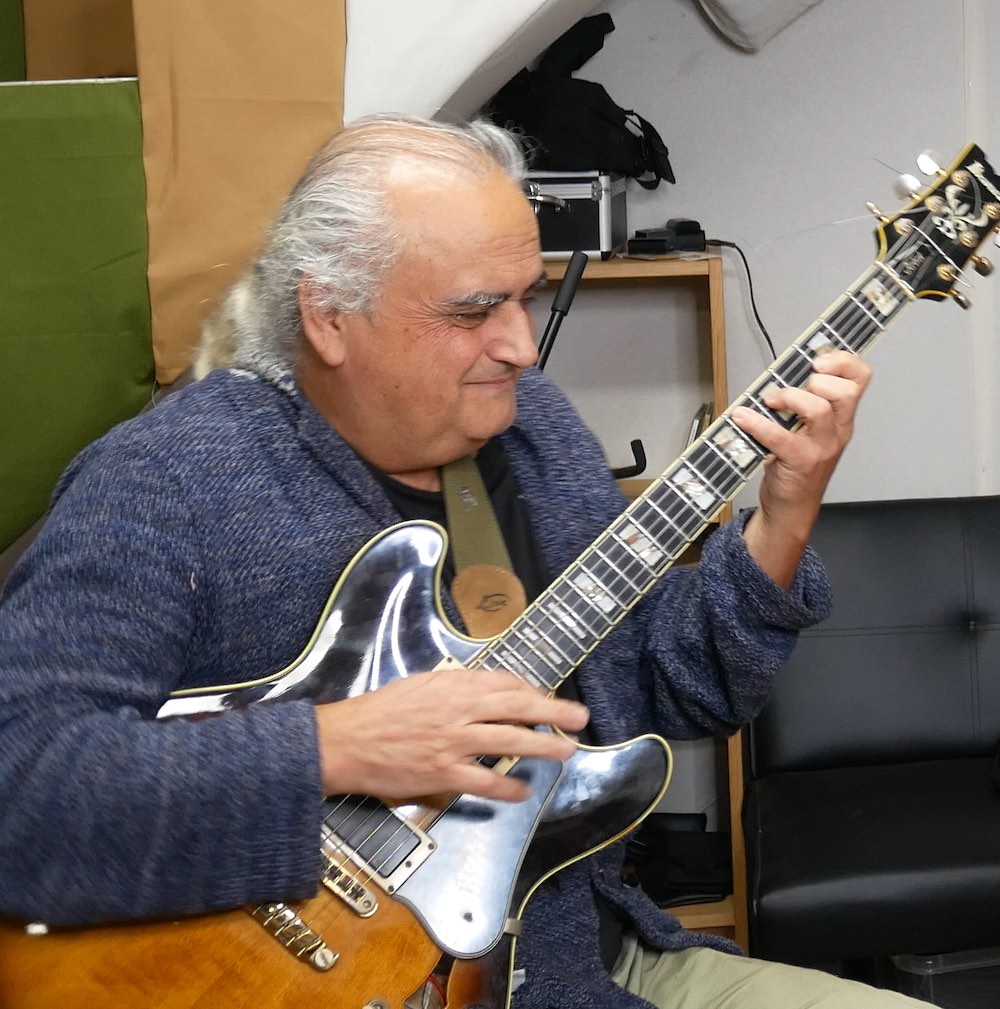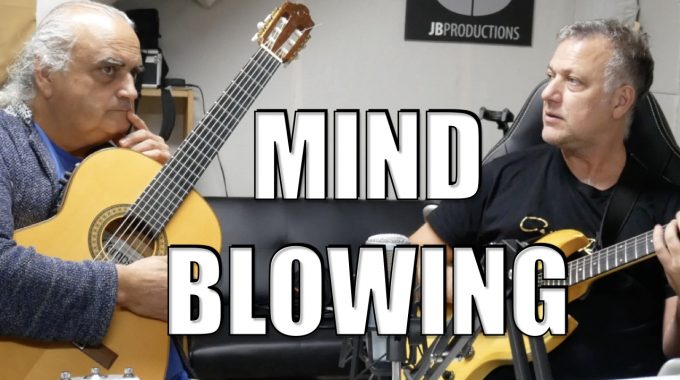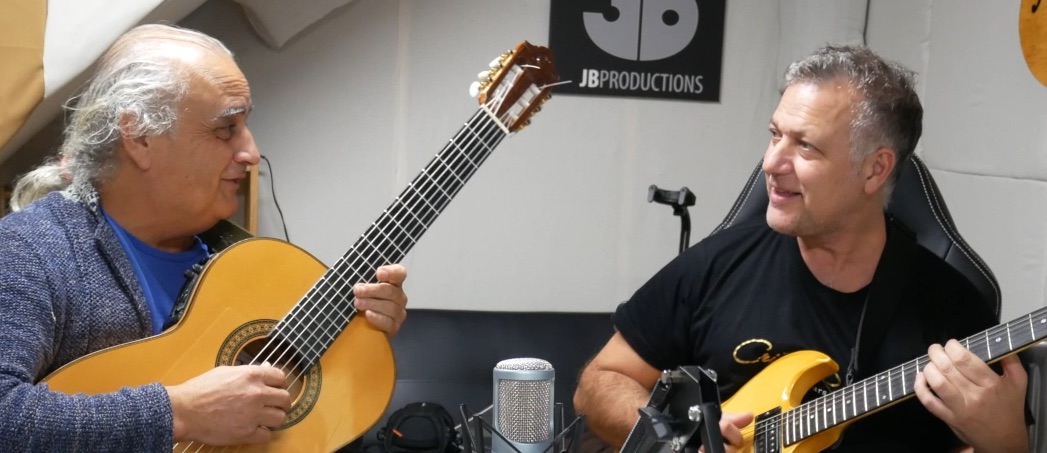Blues is a musical language. The overall blues sound comes from imposing a set of…
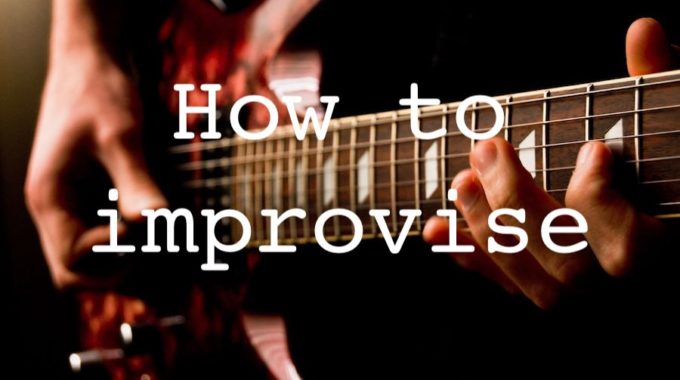
Guitar Improvisation lessons
Table of Contents
Guitar Improvisation lessons
What is improvisation
To improvise on the guitar is to create, from simple to complex, melodic and or, harmonic variations of a song, or a section.
We always need to create variations in the songs, to match how we feel as we play along. You might vary the melody to achieve the most dramatic climax, we might start the song playing the groove in a sparse manner, and build it up as we play along. We might need to do to the opposite and bring the song down, to less intensity, or we might create even more complex variations as we do in genres as jazz.
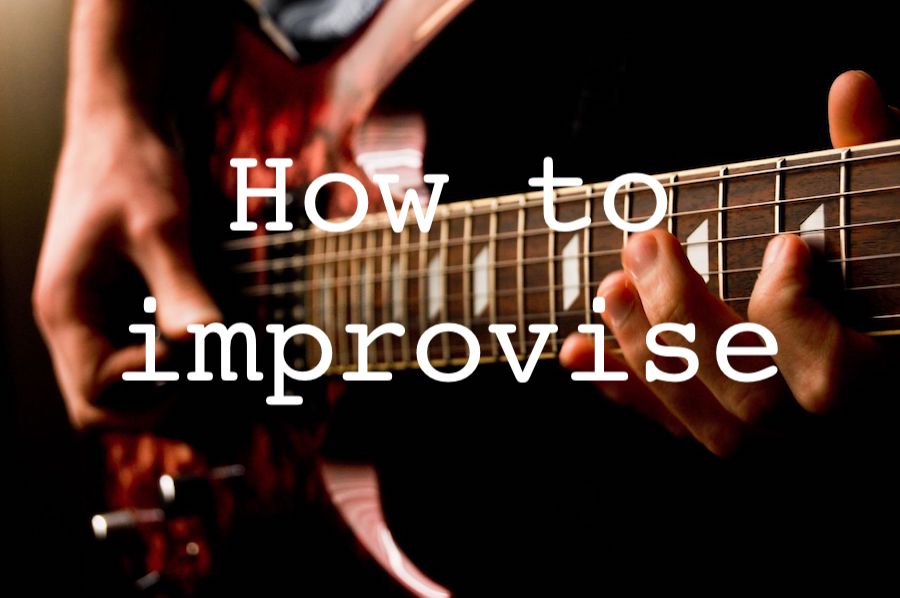
We all have in us, the need to flow, to express ourselves with constant changes of tension. However, we require training, guitar improvisation lessons to understand how to translate these emotions into music.
How to improvise
The ultimate goal of all guitar lessons , is to allow us to understand what sounds right, how to hear it, how to sing it and how to play it.
To achieve these goals we need to understand how to compose a song, and the relationship between chords and melody; the scale. We need to be able to play a song, the melody and accompaniment. We need to know our scales and chords, all over the fretboard.
Then we are ready to improvise, to create new melodies, new harmonies. We are ready to explore creating on the go short long-phrases with more or less density. We are ready to explore non harmonic melodic notes, guide tone lines, upper structure triads, chord tone soloing, motive soloing and development, augmentation, diminution, syncopation, double time, tetratonic scales and much more.
Do I need to know all the theory to be able to improvise?
Not really. Just sing what you would like to do, and play it. If you can sing it it will sound good.
However, guitar structured learning will allow you to find new ideas quicker, and also to have more and more ideas, just explode in your mind.
Theory should be a classification of what you can hear and play. I strongly suggest to explore new concepts only, once you have played them and felt them.
For example:
You love the way Stevie Ray Vaughn achieves an extreme climax in the middle of his solo. Your first step is to play it, to memorise it. Then, afterwards, as a teacher, I would give you all the tools in our guitar improvisation lessons, to choose from, to create your own; harmonic tension, melodic tension, rhythmic density and register.
I suggest that we learn to improvise, by expanding on what we hear, and what we like from others.
Generic types of soloing
I distinguish two opposite ways of creating a guitar solo in any style. We may be lyrical, like Santana , whose lines are very vocal like. Or we can create phrases, that talk in depth, about the chords, the way a jazz guitarist like George Benson or West Montgomery would play.
Electric guitars have more sustain than acoustic, nylon strings, Spanish or Flamenco guitars. We need to adapt our form of playing to the manner in which the instrument is created; an electric guitar with saturation or distortion can be even more lyrical.
At all guitar courses and guitar improvisation lessons I offer at the Creative Guitar School in Sydney and Wollongong, both online and in class, students learn all the required tools to be able to improvise in all styles and with any type of guitar.
Please note that you will learn in my guitar improvisation lessons, to apply creative tools to both the solo, the melody and the accompaniment of such.
The joy of guitar improvisation
Guitar improvisation is one of the biggest thrills you can have in music. The freedom to interact live in concert with other musicians, is a skill that you will want to develop. You must learn how to improvise, from the early stages of your guitar learning.
We develop this freedom of expression, when we are able to master, the guitar tools we need, to create variations on a song. A song, in the majority of cases has a melody that can be sung. The chords accompany that melody to help it come out, and also to help underlay the groove of the song.
When we improvise, we generally maintain the same structure of the song, and the same chords. We always have in our head the melody of the song, and based upon that and the harmonic setting, we have a reference with which all members of the band, will interact with, to create the constant variations that come with the music flow.
What styles suit best
All styles can allow for varied degrees of improvisation. It will all depend on the skill of the band members, to allow this scenario to come alive.
Jazz is the style that allows most improvisation. Jazz is not a groove but a way of performing any given song.
Styles as blues, pop, funk, flamenco, all allow for improvisation. This is what makes the music come alive. The band members interact with each other, and with the audience. We create a constant dialogue based upon the tools of improvisation; the heart beat of the performance.
Some ideas to help you redevelop your solos
I assume you have an understanding of scales, arpeggios and harmony, and are ready to get playing on the guitar.
Stretching the time
The next time you play your guitar solo, in a any style as flamenco, latin, blues, pop; try stretching the time. This means that, slightly play ahead or behind of the beat. When you play ahead you can create the feel of rushing the solo, when you play behind the beat, you can create the feeling of dragging the tempo.
To practice this technique, and incorporate it into your guitar tool box, so it automatically pops up when you need this feel, you must practice extensively. Let me give you an example of how:
- Choose a section of 8 bars of a song.
- Play over the chord changes, creating phrases that fall right on the centre of the beat.
- Then, play over the chord changes, and create phrases that start on the beat; drag behind and then fall back on the beat.
- Play over the chord changes; start playing right on tempo and finish your phrase ahead of the beat.
- Do the opposite.
- Play over the chord changes, start your phrase ahead of time, very accelerated and slowly bring the speed down, to play right on tempo.
- Try combinations of the above.
In all styles of music, you will be able to stretch in some manner the time. This will become part fo your expression, only after practicing it on your acoustic, electric, or Spanish guitar until your are able to have fun with it.
Improvisation on the guitar can be great fun. Once we know the chords, scales, arpeggios and how they relate to the harmony form, then we only need to keep on learning new ideas on what to do, understand the why, and we are off to explore a world of surprising textures and musical pleasures.
Improvising in the studio, during recordings sessions.
The most vivid, explosive recordings, only occur when musicians and guitarists can interact, together, at the same time in the recording session.
A lot of recording sessions do not cater for live interaction of the studio musicians. In my recording studio in Wollongong, I strive to achieve constant improvisation in all guitar tracks and sessions.
A recording should be an audio photograph of what occurs in a concert. Please enjoy my live concerts and studio performances on you tube.
